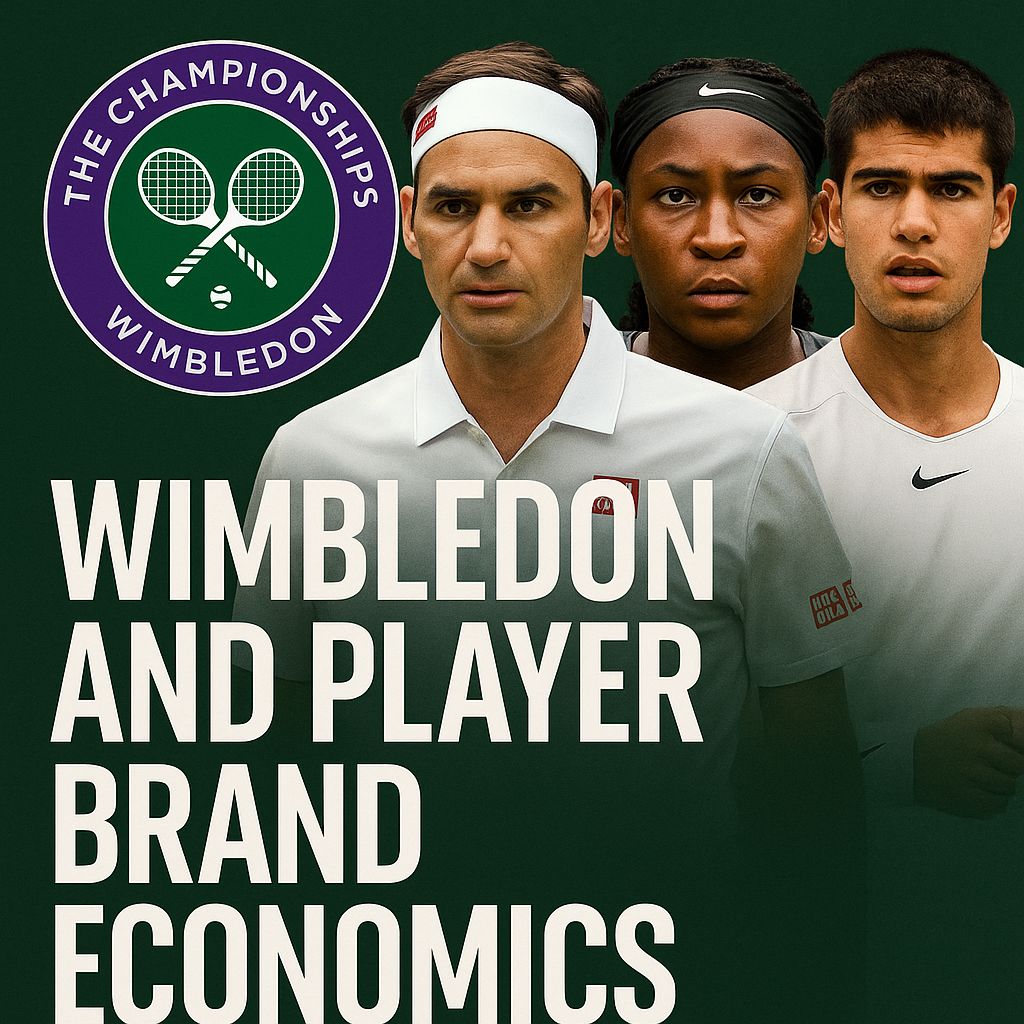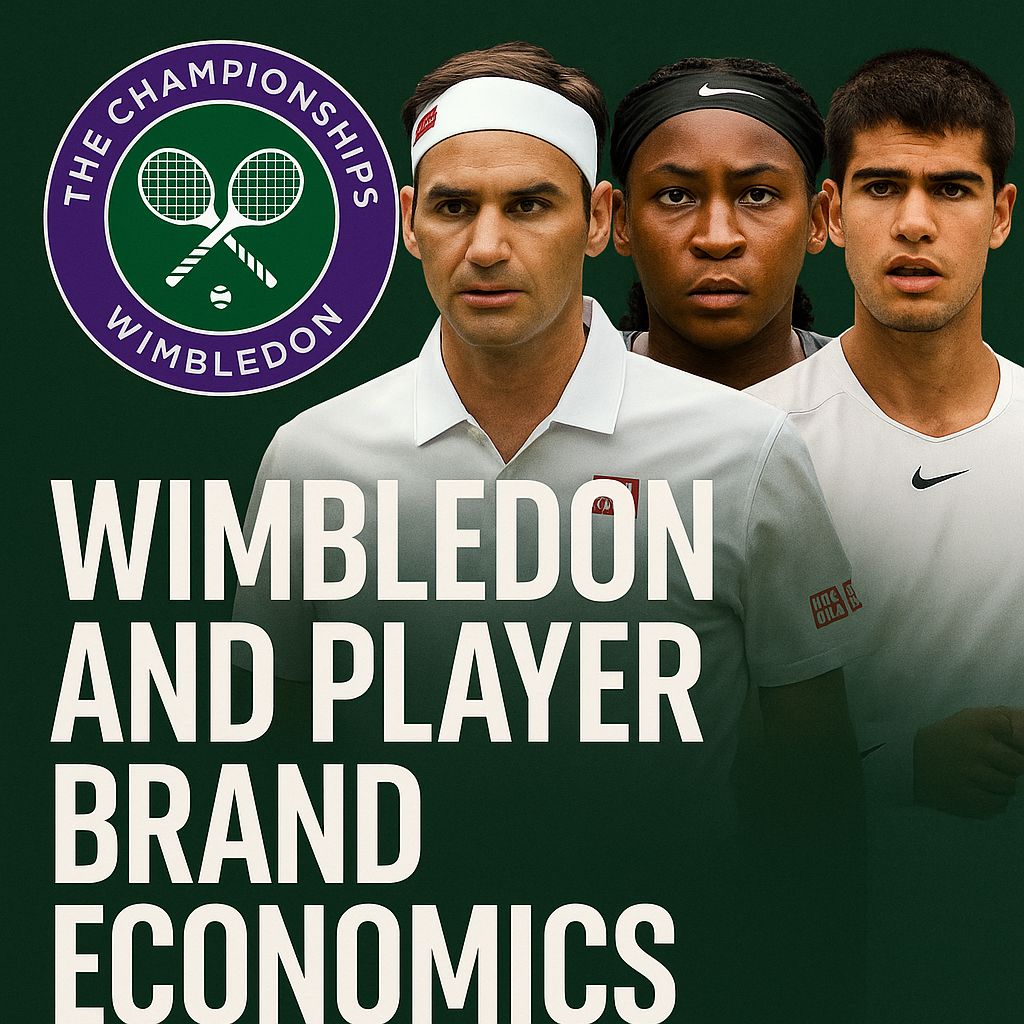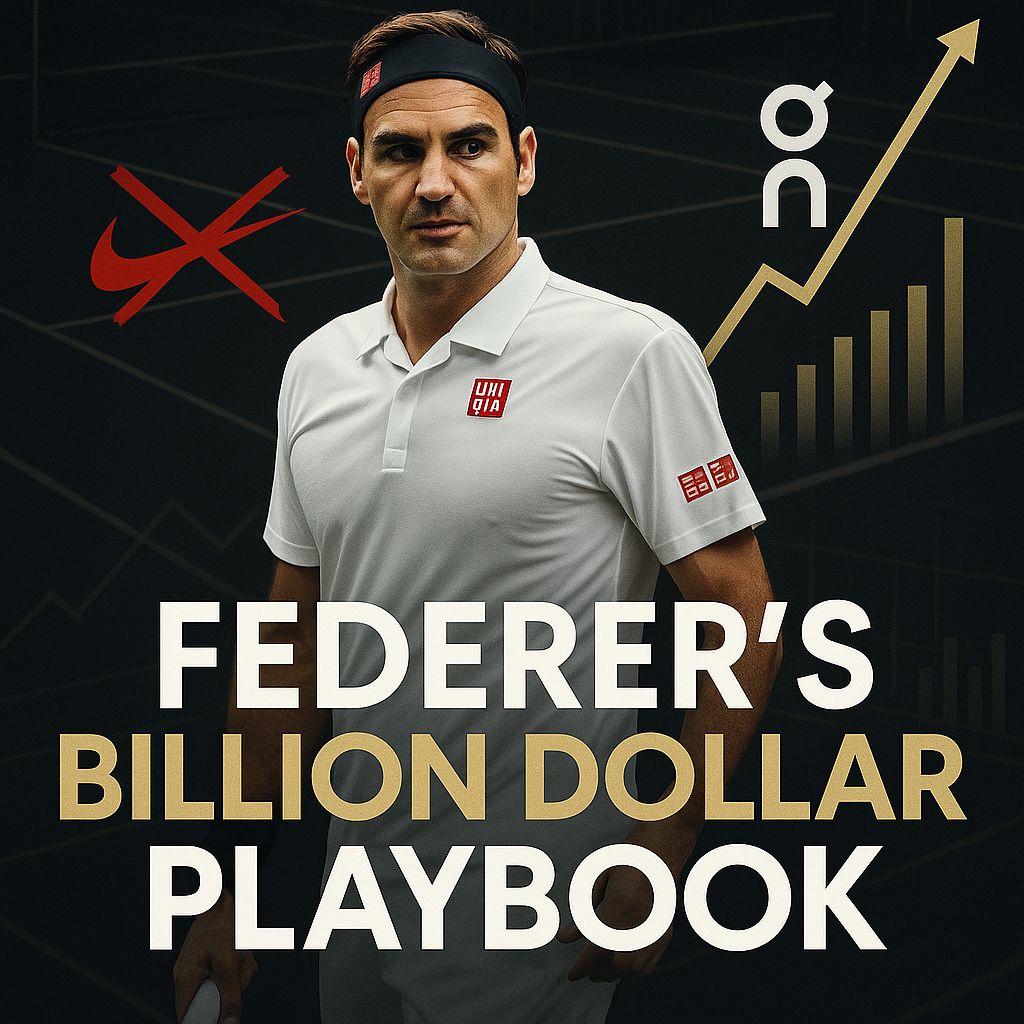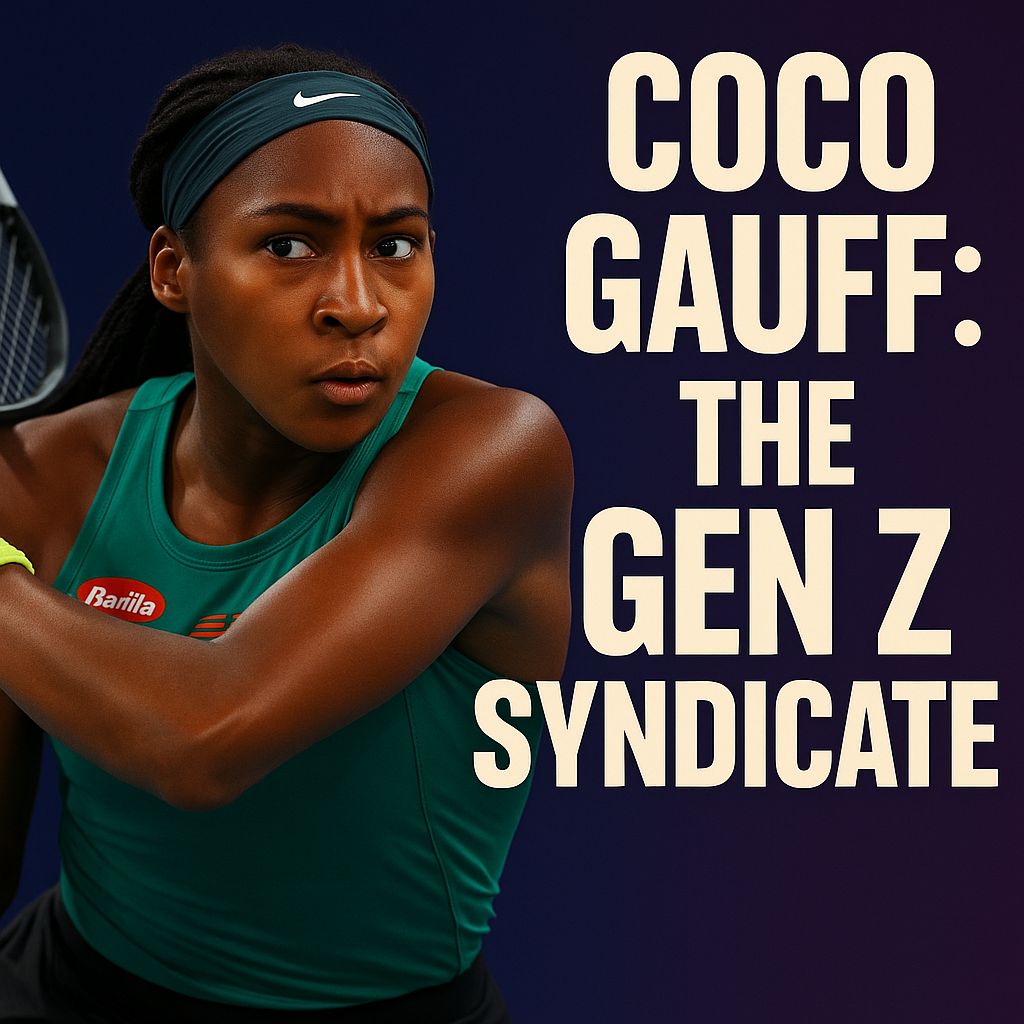- Field Vision Sport
- Posts
- The Centre Court CEO: What Wimbledon Teaches Us About Individual Brand Economics
The Centre Court CEO: What Wimbledon Teaches Us About Individual Brand Economics


Summary
Tennis players are the ultimate individual brand entrepreneurs, and Wimbledon is their billion-pound business school. From Federer's £900M+ off court empire built on equity stakes to Gauff's Gen Z-targeted digital strategy, tennis offers the sports world's clearest template for personal brand monetisation. While traditional sports rely on team revenue sharing, tennis players operate as one-person corporations with unprecedented commercial control. The lesson for sports business professionals: individual athlete branding isn't just about endorsements anymore. It's about equity, infrastructure, and long-term asset building.
Quick Reads 🎾
The Numbers That Matter:
• Wimbledon generates £200M+ annually through broadcast exclusivity and premium partnerships
• Federer's On Running equity stake: £200M+ (vs. £130M career prize money)
• Gauff outperforms veteran athletes in digital engagement per match
• Average Wimbledon viewer age: 55+ (the demographic challenge)
Three Strategic Moves to Watch:
• Equity Over Endorsement: Federer rejected Nike's £10M/year for Uniqlo equity and On Running stake
• Infrastructure Investment: Nadal's Academy creates sustainable revenue beyond match results
• Digital-First Branding: Alcaraz and Gauff prioritise TikTok-optimised content over traditional sports marketing
Business Model Breakdown:
• Prize money: Declining as percentage of total athlete earnings
• Individual sponsorship control: No team mediation or salary caps
• Appearance fees: Up to £2M for exhibitions
• IP and licensing: Personal academies, clothing lines, and brand partnerships
Key Challenges:
• Aging core audience competing with digital-native sports
• Calendar oversaturation diluting tournament prestige
• Emerging sports (padel, pickleball) offering lower barriers to entry
The Warm-Up
Hello, Hi Visionaries!
Right, let's talk about something that's been buzzing around my head since watching Wimbledon this year. You know that feeling when you're watching a match and suddenly realise you're not just watching sport. You're watching the workings of personal brand economics? That's Wimbledon for you.
Tennis players are essentially one person corporations competing on Centre Court. No team ownership, no shared revenue pools, no collective bargaining agreements. Just you, your racquet, and your ability to turn athletic performance into generational wealth.
Other athletes in the sports world should be taking notes.
The Main Event: Why Tennis Players Are Business Geniuses
The Wimbledon Effect: Scarcity Creates Value
First, let's appreciate what the All England Club has done here. Since 1877, they've mastered something most modern sports properties struggle with: the art of saying no.
No courtside advertising. No flashy brand integrations. No naming rights for Centre Court. Just Rolex, IBM, and Ralph Lauren getting that quiet presence in the most prestigious tennis venue on earth.
The result? Those partnerships command premium prices precisely because they're exclusive. Rolex doesn't just sponsor Wimbledon. They become part of its DNA. That's worth roughly £60 million annually from the BBC alone, with global broadcast deals pushing total revenue past £200 million.
Historical Context: This approach echoes the Augusta National model from golf's Masters Tournament. Both venues understand that exclusivity breeds desirability. A lesson that goes back to the social clubs of the 1920s.

The Federer Formula: From Athlete to Asset Manager
Let's talk about Roger Federer's billion dollar playbook, because it's important to bring to light.
Career prize money: £130 million. Impressive, right? Wrong. That's pocket change compared to his off-court empire worth an estimated £900 million+.
The Swiss maestro did something revolutionary in 2018. When Nike offered him £10 million per year to renew, he said no. Instead, he took equity stakes and longer-term partnerships with Uniqlo (£300 million over 10 years) and On Running.
That On Running stake? Now worth over £200 million after their 2021 IPO.
The Athlete's Mindset: Federer thought like an investor, not just an endorser. He bet on his personal brand's longevity rather than chasing immediate cash. Classic champion mentality. Playing the long game.

Nadal's Infrastructure Play: Building Beyond the Baseline
Rafa took a different approach. While everyone focused on his endorsement deals with Nike, he was quietly building physical assets.
The Rafa Nadal Academy in Mallorca isn't just a training facility. It's a yield generating asset that combines his personal brand with real estate investment. He's expanding globally, creating a sustainable revenue stream that doesn't depend on match results.
Business Takeaway: Physical infrastructure provides stability that endorsement deals can't match. It's the sports equivalent of owning property versus renting.
The Next Generation: Digital-First Brand Building
Carlos Alcaraz: The TikTok Champion
At 21, Alcaraz has already earned over £30 million in prize money. But watch his social media strategy. It's deliberately lifestyle-focused, not just tennis-centric.
His Calvin Klein partnership wasn't about athletic performance; it was about positioning him as a global style icon. His Nike campaigns are TikTok optimised from day one. This isn't coincidence. It's calculated brand management.
Coco Gauff: The Gen Z Syndicate
Gauff's doing something remarkable: she's outperforming veteran athletes in digital engagement per match. Her 2 million Instagram followers aren't just watching tennis. They're buying into her mission driven brand.
New Balance didn't just sign her for court performance. They signed her for cultural influence. Her social justice advocacy attracts brands that want to align with Gen Z values, not just athletic achievement.
The Competitive Edge: Both players understand that modern athletes must be content creators, not just competitors. They're building audiences, not just winning matches.

The Business Model Breakdown
Here's what makes tennis unique in professional sports:
Revenue Diversification:
Prize money: Declining as percentage of total earnings
Sponsorship deals: Individual control, not team centred
Appearance fees: Up to £2 million for exhibitions
Licensing and IP: Personal brands, academies, clothing lines
Equity ventures: Startups, apparel companies, real estate
Player Agency: Tennis players have unprecedented control over their commercial destiny. No salary caps, no collective bargaining restrictions, no team ownership claiming revenue shares.
The Challenges (Because It's Not All Strawberries and Cream)
Let's be honest about the problems:
Aging audience: Average Wimbledon viewer is 55+
Lack of local heroes: Post-Murray era has created engagement gaps
Calendar oversaturation: Too many tournaments dilute attention
Competition from emerging sports: Padel and pickleball offer lower barriers to entry
The Playbook: Five Lessons for Sports Business Professionals
1. Equity Trumps Endorsement Every Time
Federer's On Running investment generated more wealth than any endorsement deal. Help your clients own stakes, not just rent visibility.
2. Digital-First Strategy Wins Long-Term
Gauff's TikTok native approach is capturing Gen Z attention. Traditional sports marketing must evolve or become irrelevant.
3. Physical Assets Anchor Personal Brands
Nadal's Academy proves that real estate plus IP equals sustainable revenue. Consider how your clients can build lasting infrastructure.
Wimbledon's limited brand visibility demonstrates that exclusivity converts better than saturation. Not everything needs scale.
5. Personal Narrative Is the Product
In tennis, your story is your sellable asset. Team sport athletes should learn to package themselves as individual brands within larger organisations.
The Cool-Down
Here's what I find fascinating: tennis players have been operating as personal brands since before "personal branding" was even a term. They've created a template for individual athlete monetisation that works across sports.
Whether you're advising brands, building sports ventures, or managing talent, tennis offers the ultimate case study in how personal economics, media visibility, and global IP converge.
The next time you watch Wimbledon, don't just watch the tennis. Watch the business. Every serve, every sponsorship logo, every social media post is part of a larger strategy that's been 150 years in the making.
And honestly? That's more exciting than any match point.
What's your take on tennis's individual brand model? Could this work in team sports? Drop me a line—I'd love to hear your thoughts.
Reply